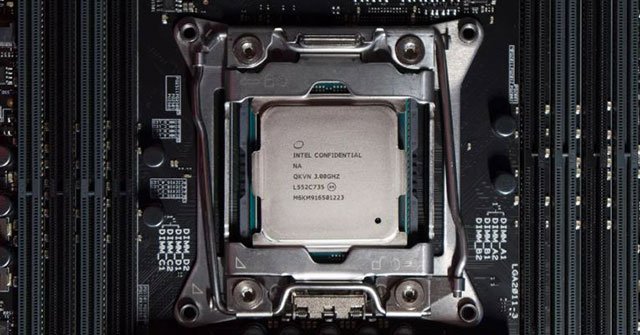Intel's 9th generation chip shows a new path, no need to follow Moore's law
Intel's 9th generation processors have landed, and as expected, they are just remakes of previous generation chips, with the same 14nm process they have used since 2014.
Focusing on performance, Intel said the new chips would have higher speeds, supposedly 10% more than last year's chip models.There are also some minor improvements for special users such as returning to STIM (Solder Thermal Interface Material).
Basically, the new chip is the same as the old one: there are more cores.The reason is simple, Intel continues to delay, can not switch to 10nm node production and still use the 14nm process.
Each microprocessor generation is decided by node production, indicating the minimum size of the wafer (thin silicon implant material).In general, the smaller the node, the more technology will be put on the chip and the performance will be higher.
So far, Intel has three generations of products using the old 14nm architecture from the 2014 Broadwell processor, which means they haven't taken any further steps in semiconductor components for nearly half a decade.This almost goes against Moore's law, which has been Intel's leading star for the past 50 years.

Intel Core i7-6950X chip
The benefit of increasing semiconductor components comes from reducing die size (the size of a rectangle on a wafer) - such as reducing power consumption, reducing heat, more efficiently, costing each chip cheaper - It will be increasingly difficult to achieve.
Instead of the classic model tick-tock being 'one step back' in this generation (tick) to optimize on the next generation (tock), they are spending more time on the first step, continuing continue to find ways to improve performance.The 9th generation chip is technically a refreshing version of the 2017 Coffee Lake architecture that Intel calls 14nm ++, the second update of the 14m, traditional node.
This is not new when we know Moore's Law will die sooner or later.This means that both Intel and users will have to adjust and expect future chip generations to be different when Intel is forced to find another way to improve performance, adding new features to encourage users to upgrade. chip.
Multi-core strategy is just the beginning because there are other strategies such as focusing on gigabit WiFi that Intel emphasized on laptop chips earlier this year or working with AMD to bring GPUs right onto the chip, helping microprocessors. Stronger mobility.
Currently, the combination of chip generations and improvements, such as the multi-core options mentioned above, has not progressed.The i7 and i9 chip models still have 8 cores, not to mention the Intel Core X series (which is only renewed) also have more cores to serve users in high demand.
Whether this strategy exists for a long time, we have to wait and see.But if this year's product is not noticeable, perhaps the future of Intel will be a gradual change rather than a righteous meal.
See more:
- Nvidia: Moore's Law is dead, the GPU will soon replace the CPU
- [Infographic] Some milestones in 50 years of Moore's Law
- Should I choose Intel Core i9, Core i7 or Core i5 CPU?
You should read it
- Intel shook hands with AMD to release the 8th generation chip competing with Nvidia
- Intel's 8th generation processor 'darts' delicious 4K videos
- Intel i7-9700K chip reaches 5.5Ghz speed on all 8 cores, with water cooled
- Intel brought its strongest chip, a Core i9 processor, to a laptop
- Future Macs won't use Intel chips?
- Top 5 best Intel CPUs 2022
 Here are 4 reasons Python is not for you
Here are 4 reasons Python is not for you What does Facebook know about you?
What does Facebook know about you? Is chiplet the answer to Moore's law?
Is chiplet the answer to Moore's law? Windows is not a service, it's just an operating system, don't update it too much like that!
Windows is not a service, it's just an operating system, don't update it too much like that! DNA information leaks are worse than leaking many credit card information
DNA information leaks are worse than leaking many credit card information How to keep Facebook server from collapsing?
How to keep Facebook server from collapsing?